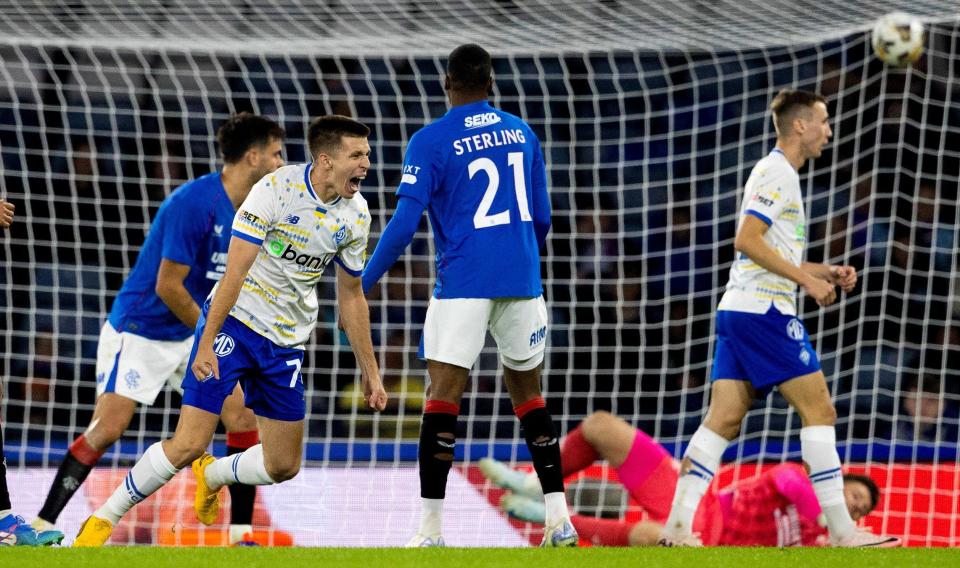So, after disappointment in qualifying for more illustrious tournaments, Rangers and Hearts now know their fate and can look forward to a European adventure.
Rangers return to the Europa League for the second straight year, a competition which they have fond memories of having reached the final in 2022.
Hearts may have failed to join them, but have the significant consolation of the Conference League.
Like the Champions League, the formats for both competitions have changed, so here is what both clubs can expect.
One big ‘super group’
We’ve been used to eight groups of four, with the top two qualifying for the last 16.
Now, it’s one table where 36 clubs participate in a league phase, adding four more teams to the mix.
The Europa League follows the same process as the Champions League.
So clubs no longer play three opponents twice, but will take on eight different sides with four home games and four away games.
To determine fixtures, teams are ranked in four seeding pots and each team will then be drawn to play two opponents from each of these pots.
They will play one match against a team from each pot at home, and one away.
The Conference League is slightly different in that there are still just six games so there are six seeding pots, with sides facing one side from each pot, three at home and three away.
Who could they get?
The seedings will be confirmed on Friday morning but we know Rangers will be in Pot 1 alongside the likes Manchester United, Tottenham, and Ajax.
As well as those big clubs, others like Real Sociedad, Athletic Bilbao, Galatasaray, are potential opponents.
There are plenty of familiar foes as well such as Braga, Dynamo Kyiv, and Malmo.
As for Hearts, there is a wide range of opponents. Chelsea are by far and away the strongest side on paper in the competition.
Then there are Kilmarnock’s conquerors FC Copenhagen and Fiorentina, who Hearts faced two seasons ago in this competition.
There is also the potential to play other British sides, with Larne of Northern Ireland and The New Saints of Wales the first sides from their countries to make it to the main draw of European competition.


How do they decide the fixtures?
Computer says yes.
Technology borrowed from chess tournaments takes over since it has been estimated that a manual draw would require up to 900 balls and would take all day.
When are the games played?
Due to the differing number of games, the schedule for the Europa League and Conference League diverges slightly.
The former starts a week earlier (but a week later than the Champions League) with the first matchday on the 25/26 September, over a Wednesday and Thursday.
The Europa League then continues until the end of January, in line with the Champions League weeks.
The Conference League does not start until Thursday 3 October, and ends the week before Christmas by virtue of having fewer games.
What happens if teams are level on points?
Head-to-head is out. The first factor will be goal difference and goals scored.
If that doesn’t get the job done, then there’s a tally of the points gained by the tied clubs’ opponents to determine a difficulty level of the teams faced.
How will the knockout stages work?
In both competitions the top eight qualify automatically for the last 16.
Those who place ninth to 24th will compete in a two-legged knockout play-off for the chance to progress.
Those 25th or lower will be eliminated – as will the play-off losers. No more dropping into the Conference League for those who miss out in the second-tier competition.
From the last 16 onwards, the Champions League will continue on its prior path with the final taking place at the Allianz Arena, Munich, on 31 May 2025.
What are the squad rules?
After the transfer window closes each club must submit two lists.
On ‘List A’, clubs can submit a maximum of 25 players, with eight places reserved exclusively for “locally trained players”, made up of at least four “club-trained” players and a maximum of four “association-trained” players.
Players who meet the “club trained” criteria have to have been on the club’s books, irrespective of the player’s nationality and age, for at least three years between the ages of 15 and 21.
An “association-trained” player is someone that has played in the same country as the club for three years, irrespective of nationality, between the ages of 15 to 21.
On ‘List B’, a club can register an unlimited number of players as long as they are born on or after 1 January 2003.
A new signing who has played in any of the European competition qualifying rounds for another club will be eligible for the league phase.
